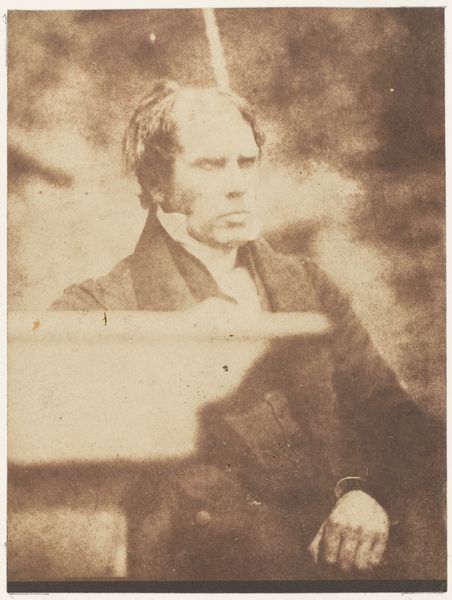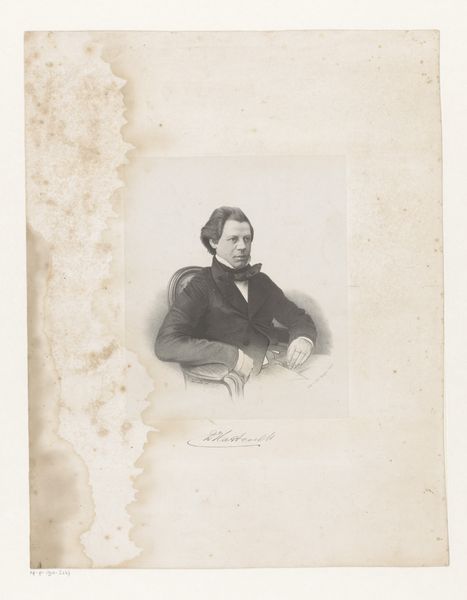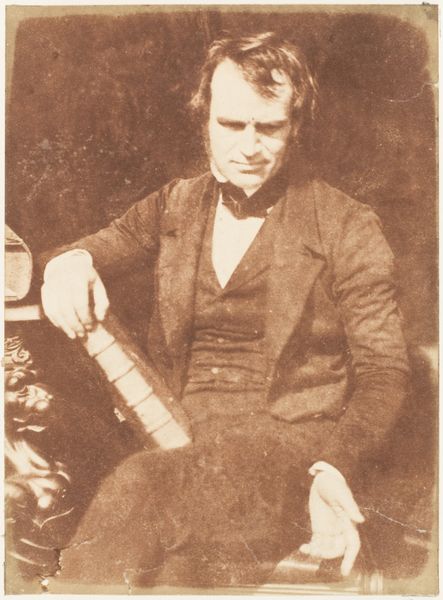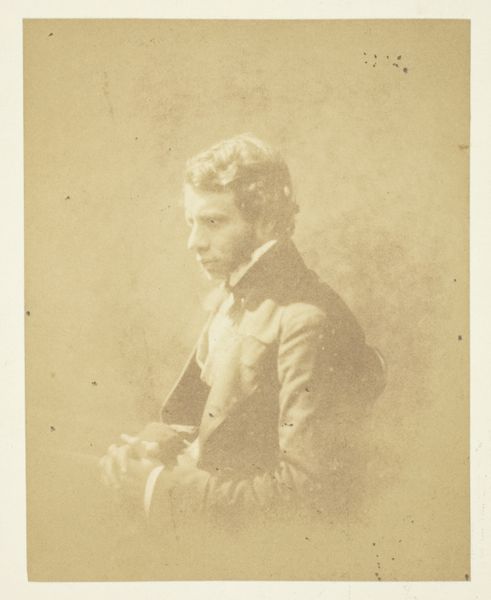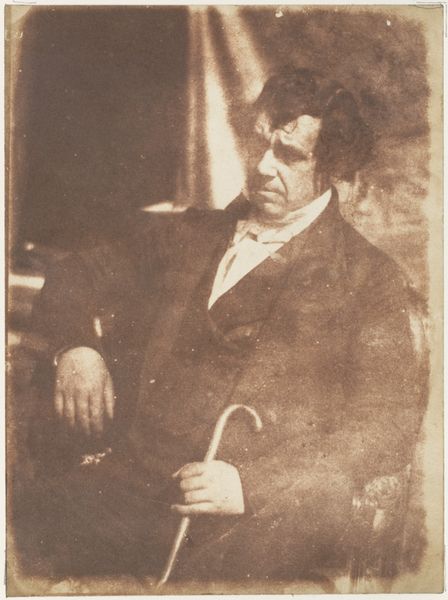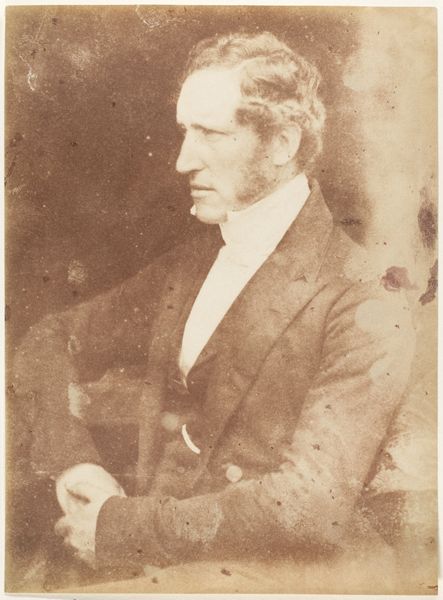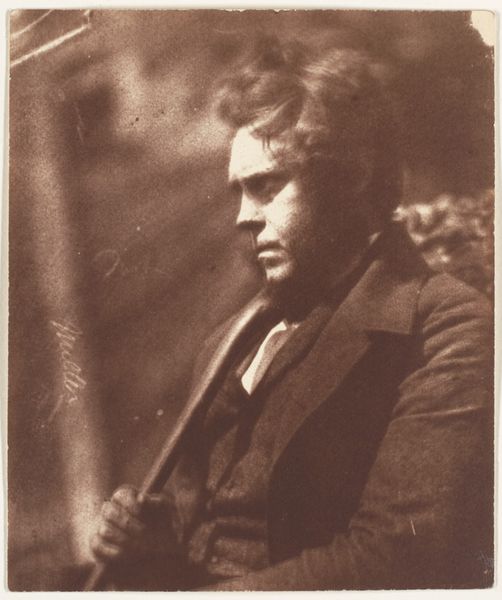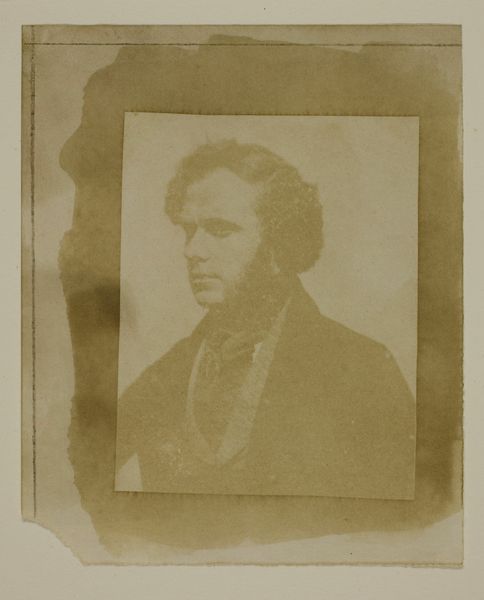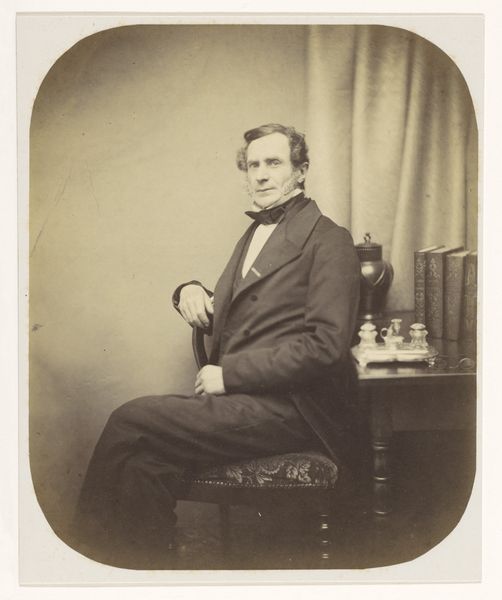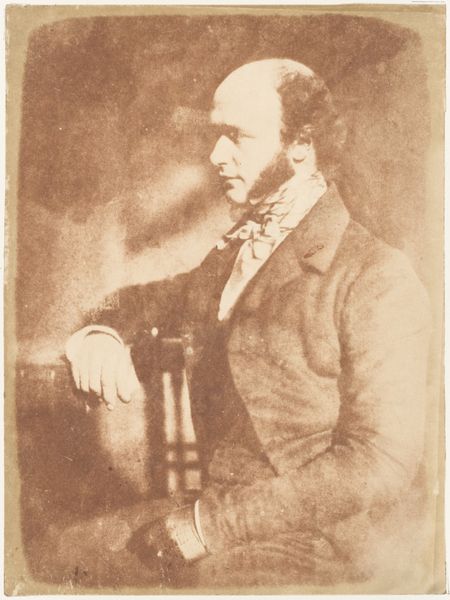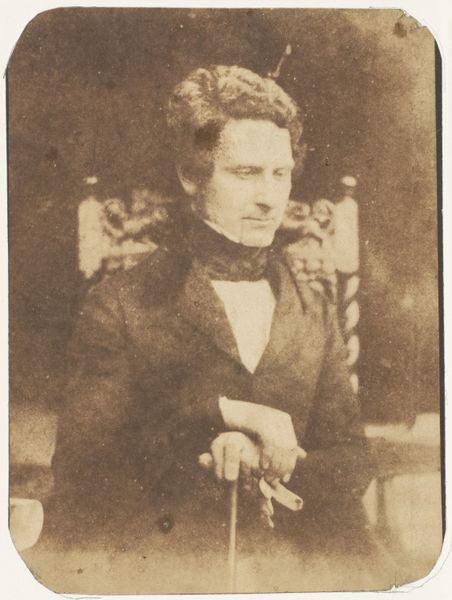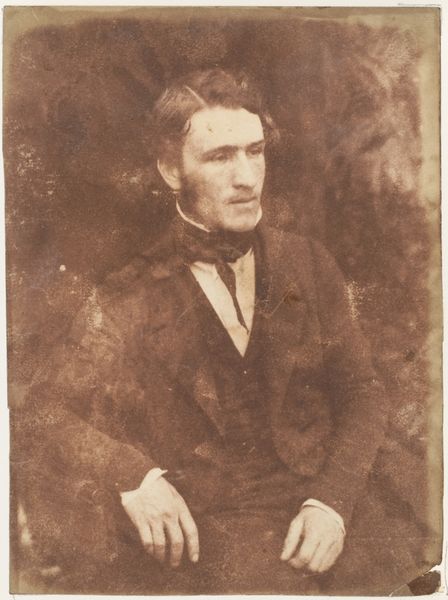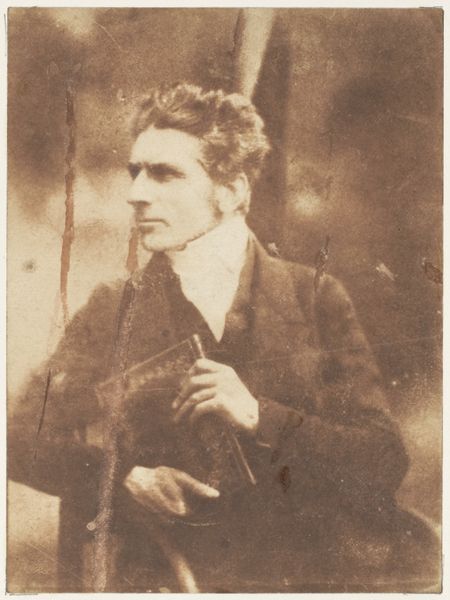![[Man] by Hill and Adamson](/_next/image?url=https%3A%2F%2Fd2w8kbdekdi1gv.cloudfront.net%2FeyJidWNrZXQiOiAiYXJ0ZXJhLWltYWdlcy1idWNrZXQiLCAia2V5IjogImFydHdvcmtzL2ZhODhjMDIxLTRhODEtNDgwOS1iZjRiLWRiNGM3MDNkOTljZi9mYTg4YzAyMS00YTgxLTQ4MDktYmY0Yi1kYjRjNzAzZDk5Y2ZfZnVsbC5qcGciLCAiZWRpdHMiOiB7InJlc2l6ZSI6IHsid2lkdGgiOiAxOTIwLCAiaGVpZ2h0IjogMTkyMCwgImZpdCI6ICJpbnNpZGUifX19&w=3840&q=75)
daguerreotype, photography
#
portrait
#
16_19th-century
#
daguerreotype
#
photography
Copyright: Public Domain
This portrait of an unknown man was made between 1843 and 1848 by the Scottish duo Hill and Adamson, using a calotype, an early photographic process. The calotype was revolutionary for its time because it produced a negative image from which multiple prints could be made. Look closely at the grainy texture and soft focus, which were characteristic of this technique. This was achieved by coating paper with silver iodide, exposing it to light in a camera, and then developing the latent image. The process, though groundbreaking, was labor-intensive, requiring meticulous preparation and handling of chemicals. The resulting prints, like this one, were celebrated for their artistic qualities, challenging the traditional hierarchy between fine art and craft. The calotype democratized image-making to some extent, making portraiture more accessible beyond the elite. But it also reminds us of the hidden labor involved in even the earliest forms of photography. Appreciating this context allows us to understand the social and technological forces that shaped the art form.
Comments
No comments
Be the first to comment and join the conversation on the ultimate creative platform.

